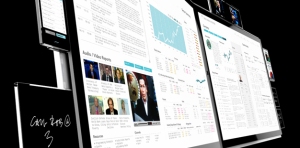Mobile first was suggested as a means to help an organization build both for mobile devices as well as the desktop application. The attempts at taking fully featured applications and wedging them into the mobile device did not work. Trying to take something with few constraints and simplifying to something with greater constraints seldom works. In this case the addition of unique features and abilities were missed on many developing mobile applications.
So mobile first arose as a way to build out applications considering the greater constraints of the mobile applications and then expanding to the desktop. This process all works well when the intent is to give the same features in both applications. However, when do you ever want the least common denominator between 2 technologies?
How does this work in real life? Are we designing to the workflows the users do? Or are we designing to the silos we build in the organization? We make the desktop apps in the desktop team and the mobile apps with the mobile team. This means that we hire UX designers for mobile or desktop applications but we are not hiring them to solve the user’s problems.
When you are at work, are you using mobile devices? Do you use them in exactly the same way as the desktop application? Do they serve different purposes depending on the tasks you are working on?
By analyzing the user’s workflows and how they do work we can do a better job designing for them. Incorporating the tools they use in the context of the work and environment will drive differing designs for each device. The strengths of the device in the context of their work can be enhanced. For example, at the desktop, many users have large monitors or multiples. The real-estate available allows for a greater display of information in context of what they are trying to do. Using both monitors to do, track and monitor work is helpful and increases productivity. When at their desk, off loading messaging and alerts to the phone is helpful for when they get up and move away from their desk the message is in hand.
The coordination of the use of different mobile devices and the desktop can be used to make a person more effective at their job not just mobile. UX designers should be oriented around the workflows and fixing the problems not around the organizations implementation teams. The designer should focus on delivering designs that optimize the workflow for any combination of devices. We are not living in a world where it is one or the other. It is the phone, tablet, desktop at work, at home and someone else’s desk.
What is the right way to organize your teams to make optimal designs for your users? Why aren’t your designers organized around the user’s workflows?


